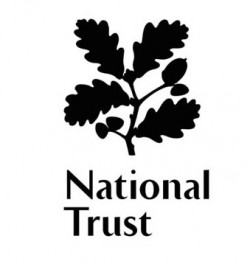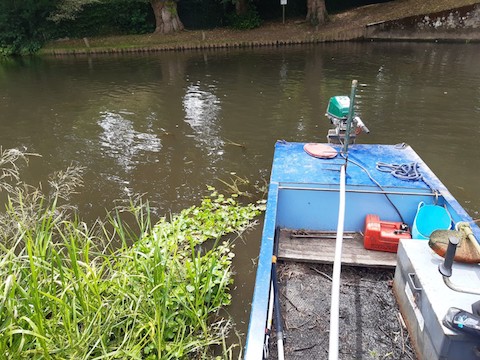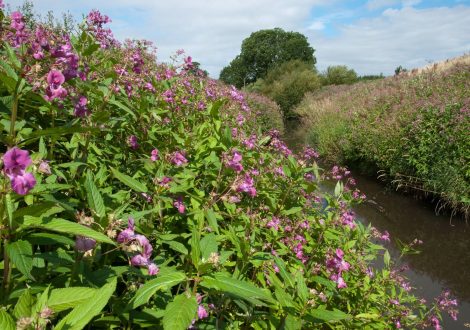 Abraham Lincoln
If given the truth, the people can be depended upon to meet any national crisis...
Abraham Lincoln
If given the truth, the people can be depended upon to meet any national crisis...
 Guildford news...
for Guildford people, brought to you by Guildford reporters - Guildford's own news service
Guildford news...
for Guildford people, brought to you by Guildford reporters - Guildford's own news service
Richard’s Wey August 2020
Published on: 5 Aug, 2020
Updated on: 4 Aug, 2020
 The latest report from Richard Cant, the Stoke lengthman on the River Wey Navigations
The latest report from Richard Cant, the Stoke lengthman on the River Wey Navigations
This is always a busy time of year, trying to get everywhere looking its best for the increased boat traffic and towpath users that come with the school summer holidays.
As I write this the kids are now off and it’s great to see so many families out enjoying the river for either walks, bike rides or picnics.
It’s also nice to see so many boats and kayaks out on the river, especially after it being so eerily quiet when it was closed to boat traffic at the height of lockdown.
Seeing people enjoying themselves and appreciating all the different ways the navigation can be used makes our hard work seem worthwhile; I just hope that we see a return of this spring’s good weather so that people can make the most of it.
As I say, there is a lot of property presentation work to be done to make everywhere look its best and, with our volunteer groups still postponed due to coronavirus, I’m lone working until they can come back safely.

The lengthsman team have to be ever vigilant for invasive plant species such as this innocuous looking floating pPennywort. When left unchecked it can completely take over. This piece below Bowers Lock had presumably been bought up river on a boat propeller and was swiftly removed by Chris the Trigg’s lengthsman.
To stay on top of things I’ve not only been working harder but I like to think I’ve been working smarter, prioritising tasks and being flexible with when and how I do things.
By doing this the key areas such as lock-sides have remained neatly mown, fishing swims and visitor moorings have been cut, the towpath vegetation has been kept wide and the increased level of litter has been kept on top of.
It’s at this stage that I’m really thankful for all the hard work that my volunteers put in over the last autumn and winter, when they thoroughly cut back vegetation and low branches along the river and towpath.
This has not only helped keep the river smart and passable and allowed me time to spend on other tasks but, from a nature conservation perspective, it has enabled me to hold off hedge trimming until well after the bird nesting season.

Himalayan Balsam can take over a river bank and very effectively out-compete other species.
Another task my volunteers would normally be helping with at this time of year is pulling Himalayan balsam, a very pretty but invasive non-native plant that loves our climate and grows veraciously near water.
When left unchecked it spreads rapidly and out-competes our native plant species, which in turn reduces the biodiversity of the area.
Last year we made a massive effort to clear swathes of balsam not only on the towpath but also in the surrounding areas.
Not wanting last year’s efforts to have been in vain, I’ve been out pulling balsam continuously since it first appeared in late spring, particularly concentrating on the edges of patches to prevent its spread.
Unfortunately it’s such a labour-intensive task there is only so much I can do and I’ll have to make a concerted effort on it again next year when (fingers crossed) things return to some sort of normality.
Like everyone else we’re all having to adapt to life and work during the pandemic and I don’t want it to sound like I’m complaining about the increased workload as I really do love what I do (but I do miss my volunteers company!).
However, you can all do your bit to keep the river such a wonderful place to visit. Please take your litter home, clear up after your dog, avoid barbecues and other fire risks, and make sure that you licence any craft you use on the water as even the small cost of a canoe or paddle board licence will go directly towards keeping the river open to all.
Richard
07786 703832
richard.cant@nationaltrust.org.uk
Recent Articles
- Letter: The Enduring Role of Parish and Town Councils
- Mr Carpenter’s Byfleet Seedling and Other Varieties of Apples
- Guildford MP Visits Local Satellite Firm During 40th Anniversary Year
- Letter: Only a Town Council Will Give Us to the Option to Choose on Some Local Services
- Comment: Parish Councils – Who Cares?
- Update: North Street Re-opened
- Letter: Parish and Town Councils Will Become More Essential Than Ever
- Plans for Several Railway Repair Projects Over August Bank Holiday
- Letter: We Should Thank Parish Councillors
- Notice: Guildford Area u3a Group Enrolment Day, Tuesday, August 12



Search in Site
Media Gallery
Dragon Interview: Local Artist Leaves Her Mark At One of England’s Most Historic Buildings
January 21, 2023 / No Comment / Read MoreDragon Interview: Lib Dem Planning Chair: ‘Current Policy Doesn’t Work for Local People’
January 19, 2023 / No Comment / Read MoreA3 Tunnel in Guildford ‘Necessary’ for New Homes, Says Guildford’s MP
January 10, 2023 / No Comment / Read More‘Madness’ for London Road Scheme to Go Ahead Against ‘Huge Opposition’, Says SCC Leader
January 6, 2023 / No Comment / Read MoreCouncillor’s Son Starts Campaign for More Consultation on North Street Plan
December 30, 2022 / No Comment / Read MoreCounty Council Climbs Down Over London Road Works – Further ‘Engagement’ Period Announced
December 14, 2022 / No Comment / Read MoreDragon Interview: GBC Reaction to the Government’s Expected Decision to Relax Housing Targets
December 7, 2022 / No Comment / Read MoreHow Can Our Town Centre Businesses Recover? Watch the Shop Front Debate
May 18, 2020 / No Comment / Read More











Recent Comments